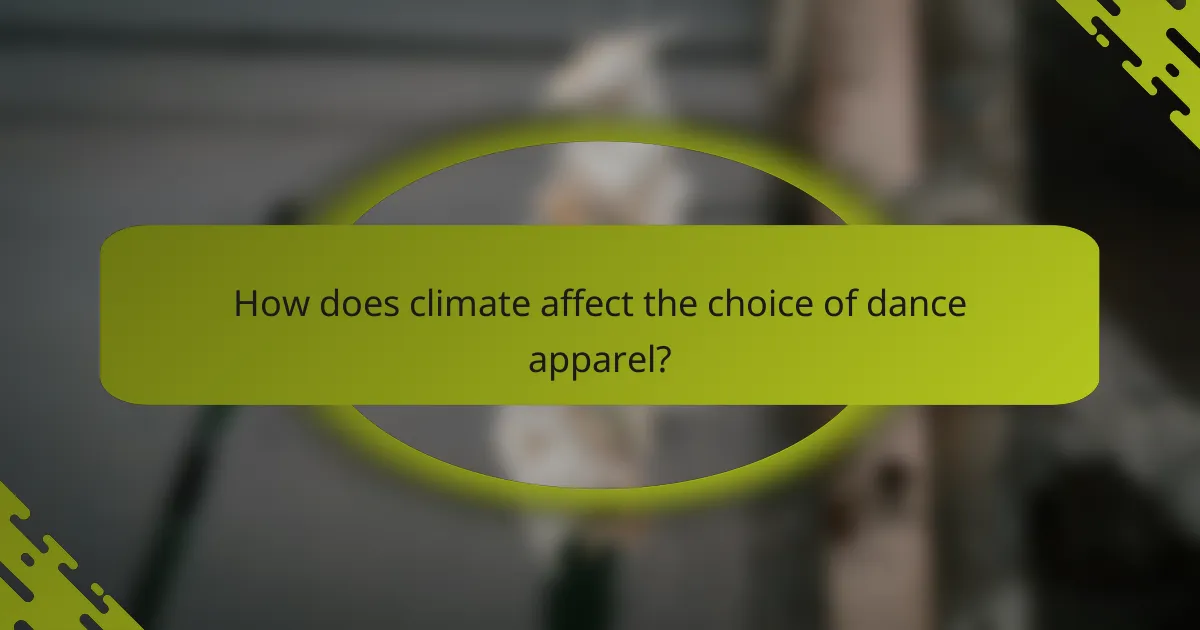Dance apparel is an essential investment for performers, and extending its lifespan requires careful attention to care and maintenance. By implementing tailored strategies for washing, drying, and storage, dancers can preserve the quality and appearance of their garments. Additionally, considering factors like fabric type and fit during selection ensures that the apparel meets both performance needs and durability standards.

How can you extend the lifespan of dance apparel?
Extending the lifespan of dance apparel involves proper care, maintenance, and storage techniques. By following specific strategies, dancers can keep their clothing in good condition for longer periods, ensuring both performance and aesthetics are maintained.
Regular washing techniques
Washing dance apparel regularly is crucial for maintaining its quality. Use cold water and a gentle cycle to prevent fabric damage and fading. Avoid bleach and fabric softeners, as they can degrade elastic fibers and affect the fit of the garments.
It’s advisable to wash dancewear separately from other laundry to prevent snagging and color bleeding. Consider using a mesh laundry bag to provide extra protection during the wash cycle.
Proper storage methods
Storing dance apparel correctly can significantly impact its longevity. Always hang or lay flat your garments to avoid creasing and stretching. Use padded hangers for delicate fabrics to maintain their shape.
Avoid storing dancewear in damp or humid areas, as moisture can lead to mold and mildew. Instead, keep them in a cool, dry place, preferably in breathable garment bags to protect against dust.
Repairing minor damages
Addressing minor damages promptly can prevent further deterioration of dance apparel. Small tears or loose seams can often be repaired with needle and thread, allowing you to extend the life of your garments without needing to replace them.
For elastic bands that have lost their stretch, consider replacing them rather than discarding the entire piece. This simple repair can rejuvenate the fit and functionality of your dancewear.
Choosing durable materials
Selecting dance apparel made from high-quality, durable materials can greatly enhance its lifespan. Look for fabrics that are specifically designed for dance, such as moisture-wicking blends, which provide both comfort and durability.
When shopping, check for reinforced stitching and quality finishes, as these features often indicate a longer-lasting product. Investing in well-constructed items may save money in the long run by reducing the need for frequent replacements.
Using protective sprays
Applying protective sprays can help shield dance apparel from stains and wear. Look for sprays designed for fabrics that offer water and stain resistance without altering the material’s breathability.
Before using any spray, test it on a small, inconspicuous area to ensure it does not affect the color or texture of the fabric. Regular application can help maintain the appearance and integrity of your dancewear over time.

What care strategies should be implemented for dance apparel?
To extend the lifespan of dance apparel, implement specific care strategies tailored to the materials used. Proper washing, drying, ironing, and stain removal techniques are essential for maintaining the quality and appearance of these garments.
Washing instructions for different fabrics
Different fabrics require unique washing instructions to prevent damage. For example, delicate materials like chiffon and lace should be hand washed in cold water with mild detergent, while cotton and polyester blends can typically withstand machine washing on a gentle cycle.
Always check the care label for specific recommendations, as some fabrics may require special handling. Avoid using bleach, as it can weaken fibers and alter colors.
Drying methods to avoid damage
To prevent damage during drying, air drying is often the safest method for dance apparel. Lay garments flat on a clean towel or hang them on a drying rack, away from direct sunlight to avoid fading.
Avoid using a tumble dryer, as the heat can shrink or warp the fabric. If you must use a dryer, select a low-heat setting and remove items while still slightly damp to minimize heat exposure.
Ironing and steaming tips
When ironing dance apparel, always check the fabric type and use the appropriate heat setting. For delicate fabrics, consider using a pressing cloth to protect the material from direct heat.
Steaming is often a better option for removing wrinkles, as it is gentler on the fabric. Hang the garment and use a handheld steamer, keeping it a few inches away to avoid moisture damage.
Stain removal techniques
For effective stain removal, act quickly to treat stains before they set. Blot the stain gently with a clean cloth and use a mild detergent or stain remover suitable for the fabric type.
For tougher stains, consider soaking the affected area in cold water before applying the stain treatment. Always test any cleaning solution on a small, inconspicuous area first to ensure it does not damage the fabric.

What quality considerations are important for dance apparel?
When selecting dance apparel, quality considerations include fabric types, brand reputation, price versus quality, and fit. Each of these factors plays a crucial role in ensuring that the clothing meets the demands of dance while providing comfort and durability.
Fabric types and their properties
The choice of fabric significantly impacts the performance and longevity of dance apparel. Common materials include cotton, spandex, polyester, and nylon, each offering unique properties. For instance, cotton is breathable and soft, while spandex provides stretch and support, essential for movement.
Consider the specific needs of your dance style when selecting fabrics. For ballet, lightweight and flexible materials are preferable, whereas hip-hop may benefit from more durable and heavier fabrics. Always check for moisture-wicking properties to enhance comfort during practice or performance.
Brand reputation and reviews
Brand reputation is a key indicator of quality in dance apparel. Established brands often have a history of producing reliable and well-reviewed products, making them a safer choice. Look for brands that specialize in dancewear, as they are more likely to understand the specific needs of dancers.
Reading customer reviews can provide insights into the fit, durability, and overall satisfaction of the apparel. Pay attention to feedback regarding sizing accuracy and how the clothing holds up after multiple washes, as these factors can significantly affect your purchase decision.
Price versus quality analysis
When evaluating dance apparel, it’s essential to balance price and quality. While higher-priced items often reflect better materials and craftsmanship, there are affordable options that still offer good performance. Aim for a mid-range price point to find apparel that meets both quality and budget expectations.
Consider investing in key pieces that will see heavy use, such as leotards or tights, while opting for more economical options for less critical items. A good rule of thumb is to prioritize quality for items that directly impact your comfort and performance.
Fit and comfort factors
Fit and comfort are paramount when choosing dance apparel, as improper sizing can hinder movement and cause discomfort. Always refer to the brand’s sizing chart and consider trying on items before purchasing, if possible. Look for apparel that allows for a full range of motion without being too loose or restrictive.
Additionally, consider the cut and style of the apparel. Some dancers prefer tighter fits for support, while others may opt for looser styles for breathability. Pay attention to seams and tags, as these can also affect comfort during practice or performances.

How does climate affect the choice of dance apparel?
Climate significantly impacts the selection of dance apparel, influencing fabric choice, layering strategies, and overall comfort. Dancers in warmer climates often prioritize breathability, while those in colder regions focus on insulation and warmth.
Choosing breathable fabrics for warm climates
In warm climates, breathable fabrics are essential for maintaining comfort during dance. Look for materials like cotton, linen, or moisture-wicking synthetics that allow air circulation and help manage sweat. Lightweight options prevent overheating and enhance performance.
When selecting breathable apparel, consider the fit as well. Loose-fitting garments provide better airflow, while tight clothing can trap heat. Opt for lighter colors as they reflect sunlight, further aiding in temperature regulation.
Layering options for colder regions
In colder regions, layering is crucial for staying warm while dancing. Start with a moisture-wicking base layer to keep sweat away from the skin, followed by insulating layers like fleece or thermal materials. Top it off with a wind-resistant outer layer to protect against the elements.
Choose flexible fabrics that allow for a full range of motion. Avoid overly bulky layers that can restrict movement. Accessories like leg warmers, hats, and gloves can provide additional warmth without compromising performance.

What are the best brands for high-quality dance apparel?
The best brands for high-quality dance apparel include Bloch, Capezio, and Gaynor Minden, each known for their unique strengths in performance, durability, and innovation. Choosing the right brand depends on your specific dance style, preferences, and needs for longevity and comfort.
Bloch’s performance wear
Bloch is renowned for its performance wear that combines style and functionality. Their garments often feature moisture-wicking fabrics and ergonomic designs, which enhance movement and comfort during practice and performances.
When selecting Bloch apparel, consider options like their leotards and tights, which are designed to provide a snug fit without restricting movement. This brand is particularly favored by ballet dancers for its elegant cuts and high-quality materials.
Capezio’s durability
Capezio is celebrated for its durable dance apparel that withstands the rigors of regular use. Their products are crafted from resilient fabrics that resist wear and tear, making them a popular choice for dancers who train frequently.
For instance, Capezio’s tights and shoes are often made with reinforced seams and high-quality elastics, ensuring they last longer even under intense conditions. Investing in Capezio apparel can save money in the long run due to its longevity.
Gaynor Minden’s innovation
Gaynor Minden stands out for its innovative approach to dance apparel, particularly in the realm of pointe shoes and supportive garments. Their products incorporate advanced materials and technology to enhance performance and comfort.
Their pointe shoes, for example, feature a unique design that provides better support and shock absorption, reducing the risk of injury. Dancers looking for cutting-edge solutions may find Gaynor Minden’s offerings particularly beneficial for both training and performances.








